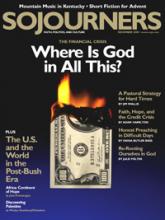One of the highlights of the Christian liturgical year for me has been gathering with friends and family at a late Christmas Eve service to celebrate the birth of Christ. With the passing of time, however, this experience has become rather bittersweet. On the one hand, we proclaim “peace on earth, good will toward all,” echoing the heavenly host that appeared to the shepherds some 2,000 years ago (Luke 2:14). Yet a quick glance at any news network’s images of those who are suffering, displaced, and dying due to war and conflict in Afghanistan, Iraq, the Darfur region of Sudan, and elsewhere—as well as in our own neighborhoods—reveals an excruciating absence of peace in the world for too many people. Indeed, I now find that these Christmas words keep “sticking in my throat,” as U2’s song “Peace on Earth” puts it, for “hope and history won’t rhyme.”
Peace: A History of Movements and Ideas, the latest book by veteran scholar and peacemaking activist David Cortright, demonstrates that hope and history, or theory and practice, have coincided perhaps more than many people might suspect. Giving honest attention to both the failures and the successes of peacemaking over the centuries in order to glean lessons for the present (and future), Peace is, against those who attack pacifism as ineffective or leading to appeasement, “an attempt to set the record straight by exploring the history of movements and ideas for peace,” Cortright writes. He is a research fellow at the Joan B. Kroc Institute for International Peace Studies at the University of Notre Dame and a member of Sojourners’ board.
Read the Full Article
